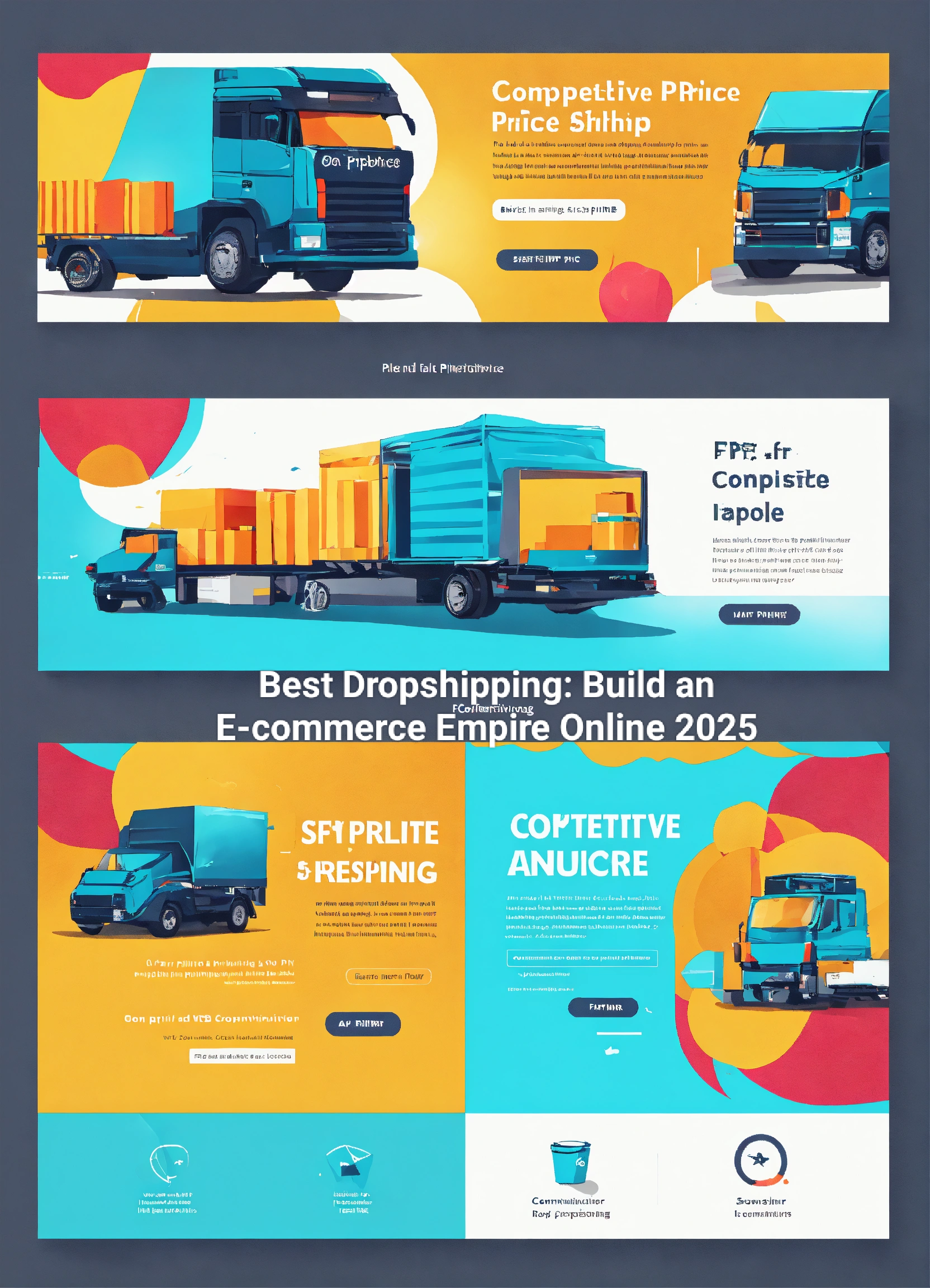Dropshipping is revolutionising the way entrepreneurs build online businesses. Learn how to create a successful e-commerce empire with this comprehensive guide. Covering everything from getting started to advanced tips, this article is your ultimate resource for mastering the art of dropshipping.
In recent years, dropshipping has become a popular and lucrative business model for aspiring entrepreneurs. With minimal upfront costs, flexible working hours, and the ability to run your business from anywhere, dropshipping provides the perfect opportunity to build an e-commerce empire. This article explores the essentials of dropshipping, its advantages and challenges, and step-by-step guidance to help you succeed.
What is Dropshipping?
Dropshipping is a retail fulfilment method where the seller does not keep inventory in stock. Instead, products are purchased from third-party suppliers, who then ship them directly to the customer. This eliminates the need for inventory management, allowing business owners to focus on marketing and customer service.
 |
| Dropshipping Ecommerce Guide |
Key Features of Dropshipping
No Inventory Required: No need to invest in stock upfront.
Low Startup Costs: Minimal financial risks compared to traditional retail.
Location Independence: Manage your business from anywhere with an internet connection.
Wide Product Selection: Offer a vast range of products without maintaining physical stock.
Benefits of Dropshipping
1. Low Initial Investment
Starting a dropshipping business requires significantly less capital than traditional e-commerce. You only purchase products after a customer has placed an order.
2. Easy to Scale
With dropshipping, scaling your business is straightforward. As your sales grow, your suppliers handle the increased workload.
3. Flexibility
Dropshipping offers the freedom to work on your own schedule and the flexibility to adapt your product offerings based on market trends.
4. Reduced Overhead Costs
No need for warehouses, storage, or inventory management reduces operating costs.
 |
Dropshipping Ecommerce Guide |
Challenges of Dropshipping
While dropshipping offers many benefits, it is not without its challenges:
1. High Competition
Low entry barriers mean many people enter the dropshipping market, leading to intense competition.
2. Low Profit Margins
With small markups, it can be challenging to generate substantial profits, especially if you rely heavily on paid advertising.
3. Limited Control Over Supply Chain
Relying on suppliers for product quality and delivery times can sometimes result in customer dissatisfaction.
4. Branding Limitations
Dropshipping often means selling generic products, making it harder to build a distinct brand identity.
Step-by-Step Guide to Starting Your Dropshipping Business
Step 1: Choose Your Niche
Selecting a niche is crucial to your success. Research market trends, identify customer needs, and focus on a specific category of products that interest you. Ensure your niche strikes a balance between profitability and competition.
Step 2: Find Reliable Suppliers
Partnering with trustworthy suppliers is vital. Platforms like AliExpress, Oberlo, and SaleHoo offer a vast selection of suppliers. Evaluate their product quality, delivery times, and customer reviews before making a decision.
 |
Dropshipping Ecommerce Guide |
Step 3: Build Your Online Store
Use platforms like Shopify, WooCommerce, or BigCommerce to create a user-friendly online store. Choose a professional-looking theme, optimise your site for mobile users, and ensure seamless navigation.
Step 4: Add Products to Your Store
Import products from your chosen suppliers to your store. Write compelling product descriptions, use high-quality images, and highlight the benefits of each product.
Step 5: Set Competitive Pricing
Pricing is a critical factor in attracting customers. Research your competitors' pricing strategies and aim to offer value without compromising your profit margins.
Step 6: Develop a Marketing Strategy
To drive traffic to your store, invest in digital marketing. Use social media advertising, email campaigns, search engine optimisation (SEO), and influencer collaborations to reach your target audience.
Step 7: Focus on Customer Service
Provide excellent customer support to build trust and loyalty. Address inquiries promptly, resolve issues efficiently, and collect feedback to improve your service.
Advanced Tips for Growing Your Dropshipping Empire
1. Build a Strong Brand
Differentiate your business by creating a unique brand identity. Develop a memorable logo, establish a consistent tone of voice, and offer an exceptional customer experience.
2. Invest in Automation Tools
Leverage tools like Oberlo, Dropified, and Zapier to streamline your operations. Automation can save time on tasks such as order processing, inventory updates, and customer follow-ups.
3. Analyse and Optimise Performance
Regularly monitor your store’s performance using analytics tools. Track metrics like conversion rates, average order value, and customer acquisition costs to refine your strategies.
4. Expand Your Product Range
Once your business is established, consider expanding your product offerings to cater to a broader audience.
5. Explore Multi-Channel Selling
Reach more customers by selling on multiple platforms like Amazon, eBay, and Etsy, in addition to your own website.
6. Build Relationships with Suppliers
Develop strong partnerships with your suppliers to negotiate better pricing, faster shipping, and exclusive deals.
 |
Dropshipping Ecommerce Guide |
Success Stories in Dropshipping
Numerous entrepreneurs have built thriving businesses through dropshipping. For example:
Sarah Johnson, who scaled her home décor store to six figures in just one year.
James Carter, a fitness enthusiast, who leveraged social media marketing to grow his sports gear store.
These success stories highlight the potential of dropshipping when combined with dedication and strategic planning.
Common Mistakes to Avoid
1. Choosing the Wrong Niche
Avoid overly saturated or extremely niche markets with limited demand.
2. Neglecting Customer Service
Poor customer service can damage your reputation and lead to negative reviews.
3. Overlooking Quality Control
Failing to vet suppliers can result in subpar products and dissatisfied customers.
4. Relying Solely on One Supplier
Diversify your suppliers to minimise risks associated with stock shortages or delays.
Conclusion
Dropshipping is a powerful avenue for building a successful e-commerce empire. By understanding its advantages and challenges, following a structured approach, and continuously refining your strategies, you can create a thriving online business. While it requires effort, adaptability, and persistence, the rewards of a well-executed dropshipping business are worth the investment.
Start your journey today and unlock the limitless potential of e-commerce entrepreneurship!










0 comments:
Post a Comment